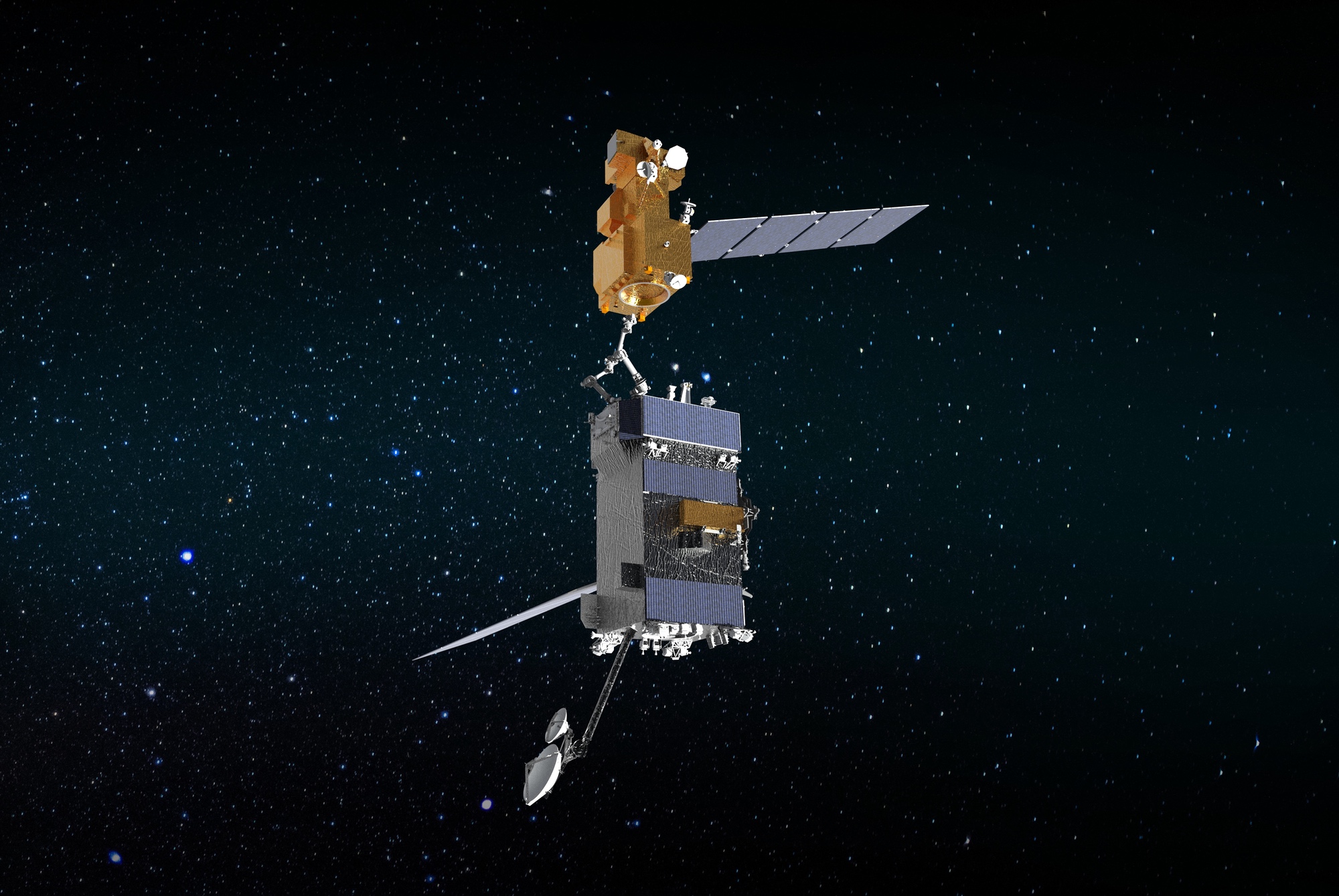NASA evaluating plan to restructure OSAM-1 satellite servicing mission

WASHINGTON — NASA is assessing a plan developed at the request of Congress to continue a satellite servicing mission but has made no decisions about rescinding earlier plans to cancel it.
NASA announced March 1 that it would cancel the On-Orbit Servicing, Assembly and Manufacturing (OSAM) 1 mission, citing extensive cost overruns and delays as well as a “lack of a committed partner” to use the satellite servicing technology the mission would demonstrate. The agency said at the time it would begin work to wind down the mission, supporting a project workforce of about 450 people through the end of the 2024 fiscal year.
Language in the final fiscal year 2024 appropriations bill, released just days after NASA’s cancelation announcement, which fully funded OSAM-1 at $227 million, directed NASA to adjust the mission to launch in 2026 within the spending profile NASA included in its 2024 budget request. That could be done, the report accompanying the bill suggested, through “potential de-scoping of some non-essential capabilities,” adding that if it is not possible, NASA should conduct another continuation review in September.
NASA has provided no public updates on that effort since the passage of the spending bill. However, in an Aug. 13 earnings call, Intuitive Machines, which has an engineering services contract with NASA Goddard Space Flight Center, the lead center for OSAM-1, suggested his company had found a way to continue OSAM-1 within the cost and schedule constraints set in the bill.
“We were asked to go in and look at what it would take to ramp that down, but also we got the opportunity to say how you might save that project, how you might get it back on schedule and back on budget,” Steve Altemus, chief executive, said on the call, referring to OSAM-1.
“We did that, and we worked with NASA to put a plan together that actually puts it back on schedule for its launch and back in the budget box,” he said. “That was briefed up the chain to NASA.”
He did not discuss how the company, working with NASA, was able to resolve the cost and schedule issues facing the mission. “We’ve restructured it for success, so that’s a very positive sign,” he said, noting language in a Senate appropriations bill for fiscal year 2025 would provide up to $174.5 million for OSAM-1, versus the agency’s request of just $11 million for closing out the project.
NASA, though, has made no decision about whether to backtrack on that cancelation decision. “NASA directed the OSAM-1 project to develop two potential forward plans for review: one to meet a 2026 launch date and another to close out the project,” NASA spokesperson Jasmine Hopkins told SpaceNews Aug. 15. “These plans have been provided to NASA leadership and are being assessed.”
NASA has not provided any insights into what a restructured OSAM-1 mission might look like. A February report by an independent review board chartered by NASA to assess the mission concluded that, if NASA did elect to continue it, it should reduce the project’s workforce to no more than 200 people and accept the Maxar-built spacecraft bus “as is” without any additional changes. It also recommended removing a lidar instrument and a space robotics experiment called SPIDER from the critical path to prevent further delays, and set a “date certain” launch readiness date no later than February 2026.
That report, though, recommended that NASA instead cancel OSAM-1. “Both cost- and schedule-to-go are substantial and the risk for further schedule decay and cost increases remains high,” it concluded, noting that the mission still required nearly $1 billion and could slip to March 2028.
There is also, despite the Senate language, no congressional consensus that OSAM-1 should continue. The report accompanying a House spending bill for fiscal year 2025 did not specify any funding for the mission, stating that appropriators were awaiting an update from NASA on the feasibility of flying the mission in 2026. Even the Senate report noted the need to see a “reasonable and executable plan” to meet the cost and schedule requirements included in the 2024 spending bill before spending any money on OSAM-1 in 2025.
Both House and Senate appropriators called on NASA to find other partners for OSAM-1, such as the Defense Department. The independent review, though, noted that while the DOD is interested in satellite refueling as one approach to what it calls “dynamic space operations,” the military is more interested in such capabilities in geostationary orbit, rather than low Earth orbit, where OSAM-1 will operate.
DOD personnel that the board talked to were concerned about impacts to the industrial base if OSAM-1 is not continued, but those people “were consistent in their view that the high cost, relatively short operational life, the mission orbit in LEO and OSAM-1’s own inability to be refueled did not make their industrial impact concerns override consideration of program termination or substantial redirection.”
Related
Read the original article here






